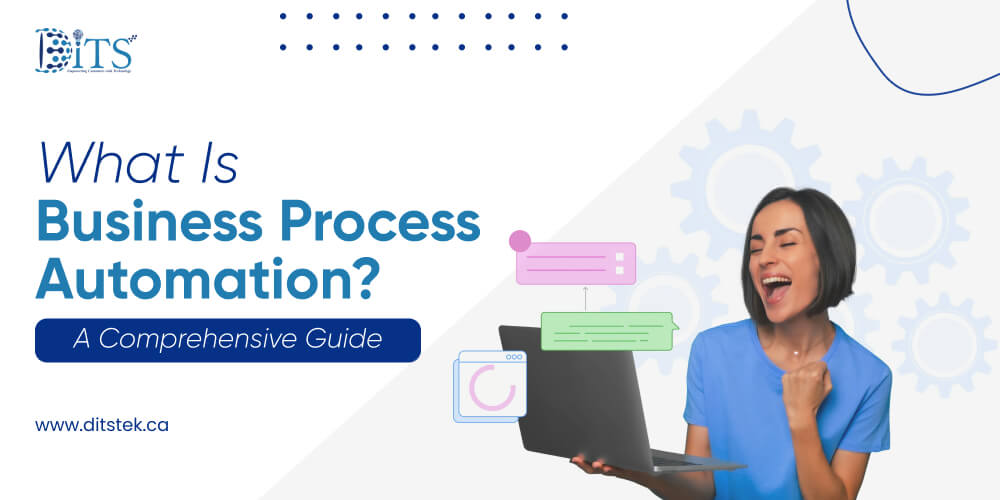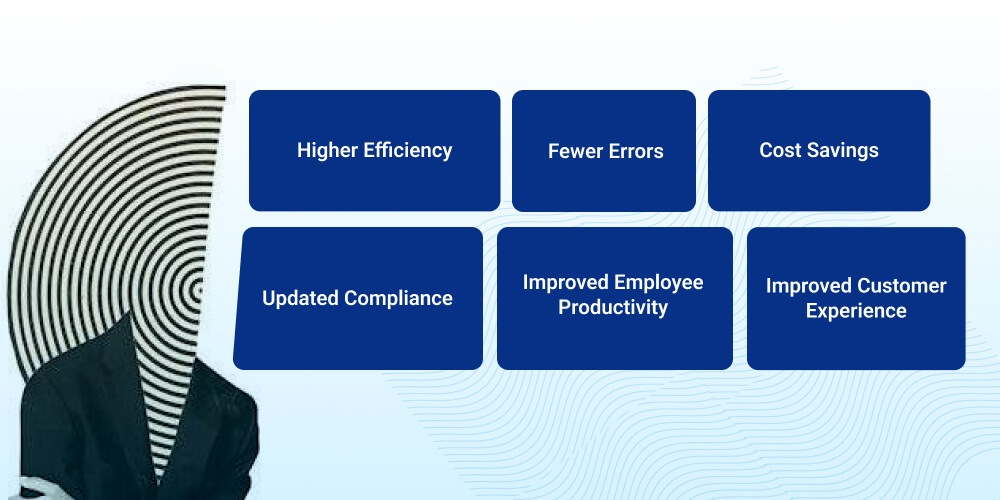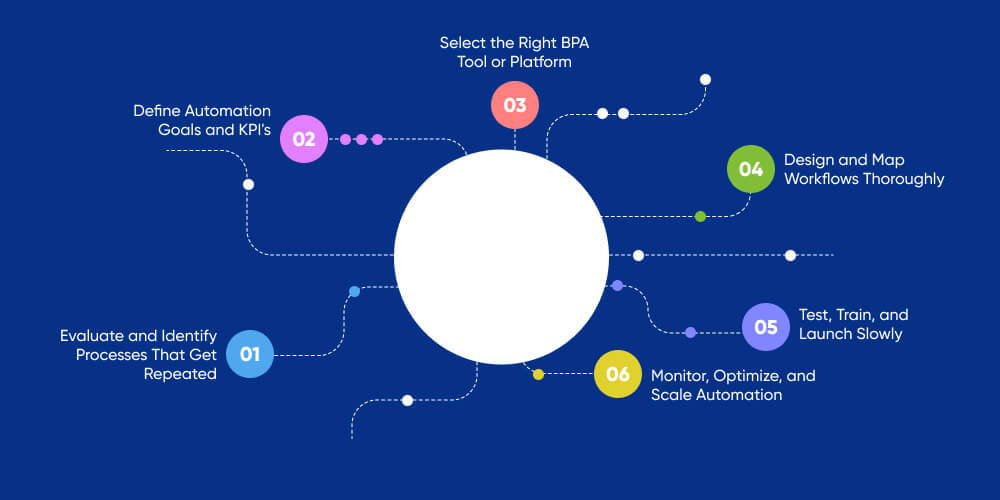What Is Business Process Automation? A Comprehensive Guide
Ditstek Blogs
Often, businesses are filled with repetitive work, reports, approvals, data entry, and endless emails. Over time, these small activities take away valuable hours for planning, growth, or customer service.
Business process automation can take these everyday tasks off your plate through software tools. It speeds up operations, reduces human error, and helps you be more organized. Instead of repeating the same steps, organizations will have systems handle them.
The use of automation is becoming increasingly common among businesses in Canada seeking greater efficiency in their daily operations. Whether in manufacturing and retail or finance and logistics, automation provides time and cost savings while delivering the same quality.
Ready to Streamline Your Workflows?
Discover how automation can eliminate inefficiencies and help your teams focus on results that truly matter.
What is Business Process Automation?
Business Process Automation (BPA) is the use of technology to automate repetitive, manual business processes with minimal human intervention. BPA uses software to improve workflows, reduce errors, increase efficiency, and enable employees to focus on more strategic work. It automates tasks like invoice processing and data entry, and complex multistep processes such as customer onboarding and other customer-facing work.
Today, BPA technology often uses modern advanced technologies such as AI and machine learning to improve scalability, and automation can be utilized in many departments and business functions, including, but not limited to, HR, finance, and customer service.
It's also essential to understand how BPA differs from other forms of automation. Robotic Process Automation (RPA) is about repeating simple tasks on a computer screen – typically copying and pasting data. Artificial Intelligence (AI) automation uses data to enable decisions and predictions. BPA often leverages RPA and AI to orchestrate workflows across departments and applications.
Key Benefits of Business Process Automation

By allowing software to handle repetitive tasks, team members can focus on more salient goals, such as improving services, managing clients, or seeking growth opportunities. Below are some highlights of key benefits companies commonly experience after implementing automation.
Higher Efficiency
One of the most apparent advantages is speed. Things like approvals, order processing, data entry, or report generation that used to take hours can now be completed in minutes. With standardized workflows and fewer manual steps, teams get through work faster and do less double-checking. The result is a more seamless operation with fewer delays or breakdowns.
Fewer Errors
Even seasoned employees make errors, especially around massive amounts of data or complex paperwork. Automation mitigates this risk by performing tasks consistently. A good example is a system that automatically addresses anomalous data by updating a customer record without omitting details or misspelling a name. This reliability and consistency enable accurate and, for the most part, safe data collection across departments.
Cost Savings
Every minute saved on manual work adds up. Lower business operating costs mean some functions don't require extra employees, paper, or paper processes, or excess manual checking. Automation also reduces expensive rework. Human errors typically cause this rework. These amounts may be relatively small, but over the lifetime of their usefulness, they can be redirected to endeavors that grow the business at lower costs, while still maintaining quality.
Updated Compliance
Compliance is mandatory across industries such as finance, healthcare, and manufacturing. Automation creates a trail of what happened, when, and what was approved, along with the conditions under which it was approved. The trail helps organizations remain compliant with regulations and makes audit processes easier.
Improved Employee Productivity
When automated solutions replace routine tasks, employees have more time to focus on creative, strategic, or customer-facing work rather than spend hours on data entry. The result is higher employee productivity and greater job satisfaction, as employees can see that their work has greater purpose.
Improved Customer Experience
Automation makes it easy to respond quickly to customer requests and communicate consistently. Whether it's sending order confirmations, tracking shipments, or following up on service requests, valuable time and effort are saved, and fewer errors are made. Customers can see the added value, and often keep coming back for more.
Curious How BPA Fits Your Business?
Get a tailored assessment of your operations and see where automation can bring measurable impact.
How to Implement Business Process Automation

Making that first step into automation can be simple. It's really about being familiar with your business, sticking to simple actions, and introducing change slowly to make it easier for the organization to adapt and realize the benefits of automation.
1. Evaluate and Identify Processes That Get Repeated
The first step is to write down all the tasks your teams perform regularly —for example, approvals, data entry, or status updates. By design, these types of functions are usually the easiest to automate, and you will see benefits from the automation quite quickly. You should talk to representatives at several levels of your organization to identify where the most time is being wasted.
2. Define Automation Goals and KPI's
Before you start, determine what you want to get out of the automation. A quicker turnaround? Costs down? Better accuracy? Defining your goals will keep you on track to justify your investment in BPA later. You will also be able to measure success.
3. Select the Right BPA Tool or Platform
Every business has its own unique situation. Some companies will be fine with a simple workflow automation tool. Others may want a complete business process automation software that connects all business systems. Choose wisely so it fits the scale you need and, most importantly, works with your existing tools.
4. Design and Map Workflows Thoroughly
Automation is most effective when workflows are well-defined. Before automating, map out a process step by step: who does what and when. This allows you to analyze unnecessary steps and improve the flow before it goes live.
5. Test, Train, and Launch Slowly
Take your time. Test automation before rolling it out across the organization: Try it with one or two teams or departments first. Ensure that everything flows smoothly and employees are at ease using the system. Have sufficient training in place to help employees understand the changes and their benefits.
6. Monitor, Optimize, and Scale Automation
Once it is live, watch the numbers to assess performance. Automation isn't a one-and-done task; you can continually improve it. Monitor and adjust based on data and feedback, and leverage automation in other parts of your business.
At DITS, we specialize in creating business process automation solutions that are adaptable to any sector and team size. We also utilize artificial technology to help businesses become smarter and more efficient in their workflows.
Choosing the Right Business Process Automation Partner in Canada
Selecting the right automation partner can make a huge difference in how smoothly your transformation proceeds. The right company won't just set up software — they'll understand your goals, simplify your operations, and help your team adapt comfortably.
When searching for a partner, look for one that focuses on your business objectives rather than just selling tools. They should be able to study your processes, identify gaps, and build business workflow automation that actually solves real problems. A good partner will also offer long-term support to help you refine and expand automation as your business grows.
At DITS, we specialize in creating customized business process automation software for companies across different industries. Our approach goes beyond development — we use artificial intelligence to maintain quality, predict issues early, and personalize features based on how your teams work. Since we integrate AI into every project, our systems keep improving with time, making operations smarter and more reliable.
Partnering with an experienced custom software development company also helps you stay ahead of competitors. With the right automation setup, even small and medium-sized businesses in Canada can operate as efficiently as large enterprises, without spending a fortune or hiring massive teams.
Ready to Build Your Automation Roadmap?
Partner with a development team that designs, builds, and scales automation customized to your goals.
Conclusion
Using technology to automate repetitive, time-consuming tasks frees up staff to focus on the choices that really add value and support growth. This is the true purpose of business process automation to free up more time to devote to what drives value, growth, money, and time.
Across Canada, more organizations are seeing automation as a critical part of running a successful, modern business. From financial management to customer support to operational improvement, automation makes everything easier while keeping things on point and consistent.
At DITS, we help organizations design and implement automated systems that are reliable and will grow along with them. Using AI, we build automation solutions that create better accuracy, speed up processes, and ensure continuous improvement. From development through quality assurance, we build solutions to be precise and scalable.
When automation is well-thought-out, well-planned, and aligned with your business goal, it will do more than save you effort; it will change how your organization works and help it move forward.
FAQs
1. What is the main purpose of business process automation?
The main aim of business process automation is to reduce manual workload and make operations more efficient by automating repetitive business tasks. It allows companies to finish processing faster with fewer errors and provides teams with time to focus on more strategic work.
2. How does business process automation differ from robotic process automation (RPA)?
Both BPA and RPA save significant time; however, RPA specializes in automating repetitive tasks, such as copying data from one system to another. BPA is useful for managing end-to-end workflows across departments with many tasks and tools, improving process coordination between teams.
3. Is automation suitable for small and medium-sized businesses in Canada?
Yes, absolutely. Affordable solutions are available that are specifically tailored for smaller businesses. Many of those solutions automate everyday routines — billing, approvals, and reporting — without requiring a large IT team.
4. How can AI improve automation in business processes?
AI provides intelligence to automation by reading and analyzing data, predicting outcomes, and improving accuracy across many functions. For example, AI will be able to read, detect errors, suggest process improvements, and, over time, build a more dynamic knowledge base for automation.
5. How can companies ensure data security while using automation?
Make sure to work with reputable enterprises that have applicable privacy policies/procedures in place. Ensure that an organization stays up to date and relevant, maintains limited access, and ultimately stores data in accordance with applicable laws.

Dinesh Thakur
21+ years of IT software development experience in different domains like Business Automation, Healthcare, Retail, Workflow automation, Transportation and logistics, Compliance, Risk Mitigation, POS, etc. Hands-on experience in dealing with overseas clients and providing them with an apt solution to their business needs.
Recent Posts
Get in touch











 Calgary | Edmonton | Vancouver | Toronto
Calgary | Edmonton | Vancouver | Toronto